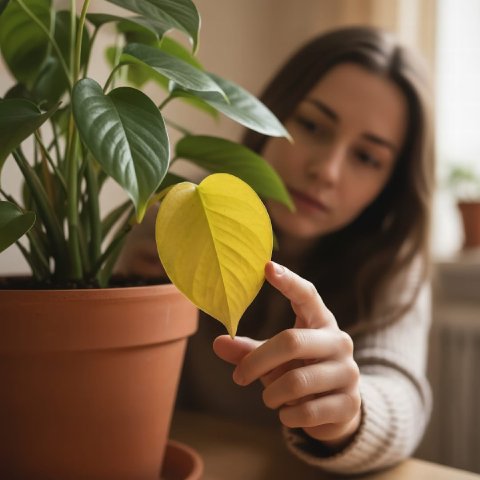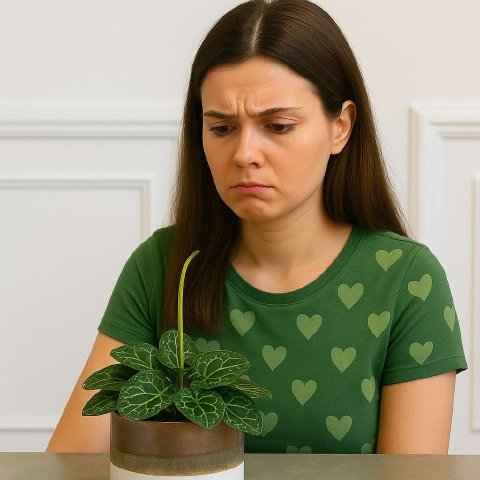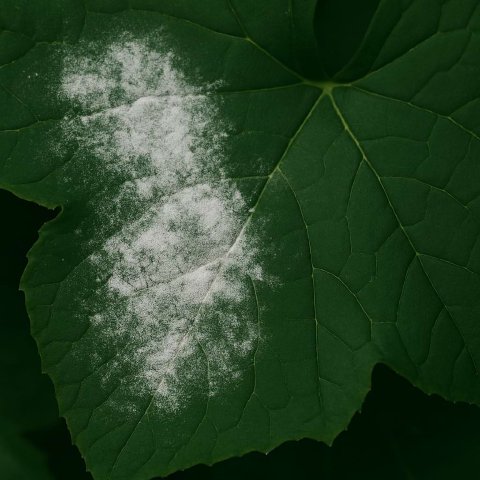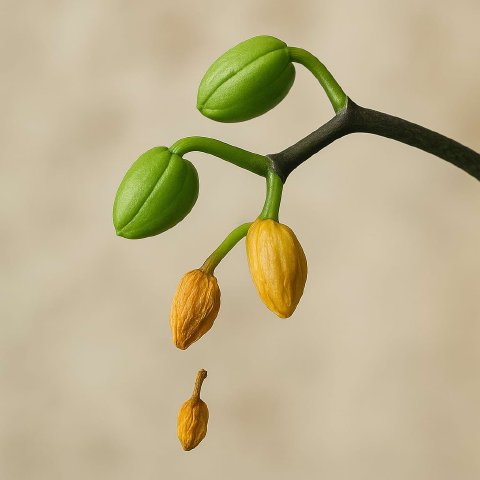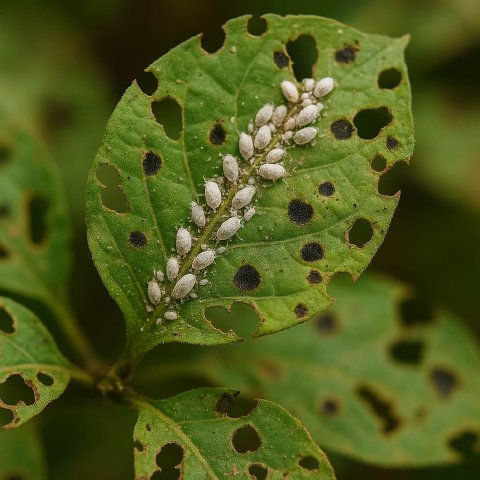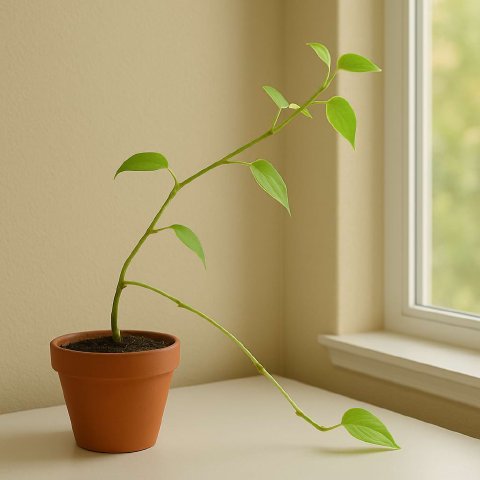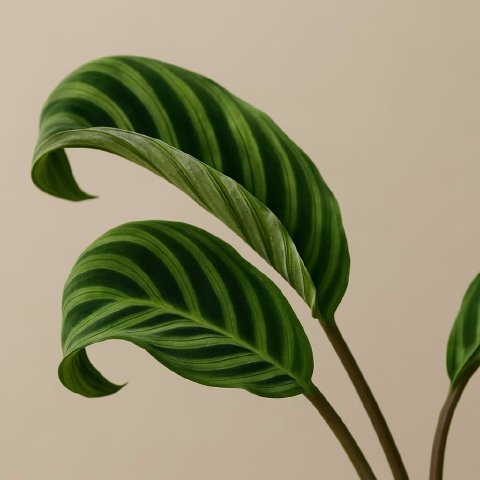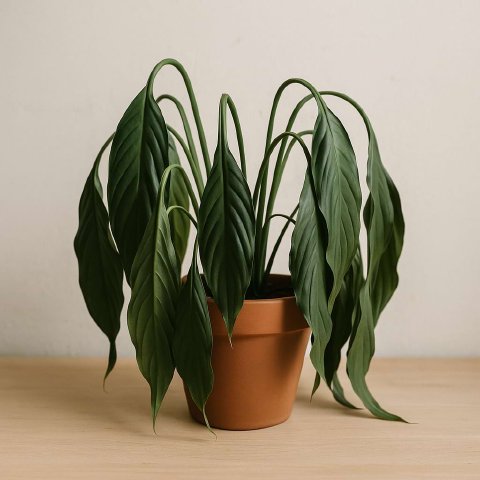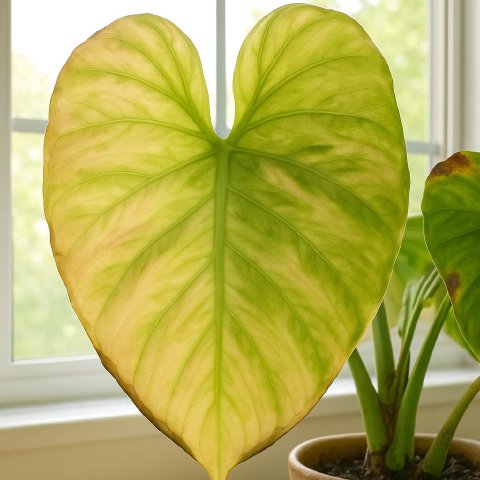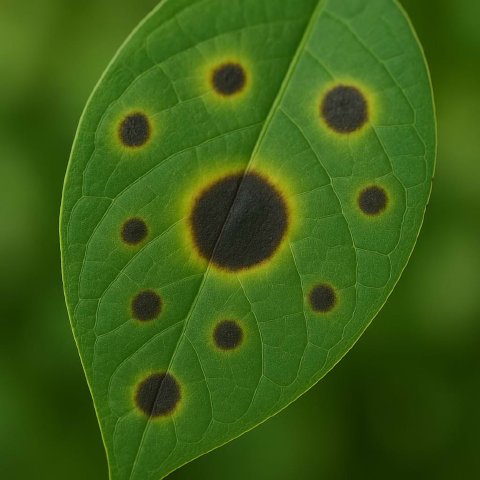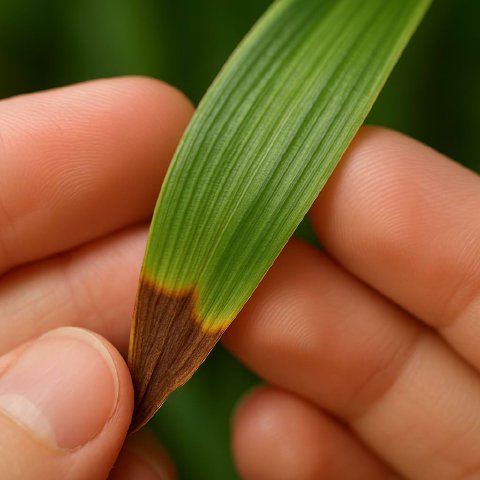🪴 In This Guide 🪴
🎯 White Mold on Soil? Let's Diagnose the Problem
Quick Diagnostic Chart
Hello, plant friends! Anastasia here. Have you noticed a white, fuzzy layer growing on top of your houseplant’s soil? Take a deep breath-this is a very common issue, and it’s almost always harmless to your plant.
This white stuff is a type of saprophytic fungus. Its appearance is not a sign of disease, but rather a symptom of the environment: the soil is staying too wet for too long. Let’s confirm what you’re seeing.
| If you see… | It’s likely… | The Core Problem is… |
|---|---|---|
| A thin, white, fuzzy or web-like layer on the topsoil | Common Saprophytic Mold | Damp Soil & Poor Airflow |
| Tiny yellow mushrooms popping up from the soil | Flowerpot Fungus (Leucocoprinus birnbaumii) | Damp, Rich Soil & Poor Airflow |
| A crusty, white, mineral-like buildup on soil/pot | Mineral Deposits (Efflorescence) | Hard Tap Water |
🤔 What Is This White, Fuzzy Stuff?
A Harmless Decomposer
The fuzzy, white mold you see on your soil is a type of saprophytic fungus. This sounds scary, but all it means is that this fungus is a decomposer. Its job in nature is to break down dead organic material.
Your potting mix is full of organic matter like peat moss, compost, and bark. The mold is simply doing its job by feeding on this decaying material. Crucially, this mold does not feed on or harm your living plant.
However, you shouldn’t ignore it. The presence of mold is a clear sign that your soil is staying too moist and not getting enough air circulation. While the mold itself isn’t the danger, the conditions that allow it to grow-soggy soil-are the exact same conditions that lead to root rot, which is very dangerous for your plant.
🌿 Why Mold Appears and How to Get Rid of It
The Main Causes: Moisture & Stagnant Air
Mold spores are everywhere. They only become visible when they find the perfect conditions to grow. For soil mold, those conditions are:
- Overwatering: Watering too frequently keeps the soil surface constantly damp, creating an ideal breeding ground.
- Poor Air Circulation: Stagnant air allows moisture to linger on the soil surface. This is common in crowded plant corners or stuffy rooms.
- Not Enough Light: A plant in a low-light spot will use water much more slowly, meaning its soil stays wet for longer after each watering.
- Contaminated Potting Mix: Bags of potting soil are not sterile. They are often damp and full of organic material, and can contain dormant mold spores that activate once you start watering.
How to Remove the Mold: A 3-Step Process
Step 1: Scrape It Off Using a spoon or a small trowel, gently scrape off the top half-inch of soil where the mold is visible. Discard this soil.
Step 2: Let It Dry and Breathe This is the most important step. Allow the top 1-2 inches of the remaining soil to dry out completely. Move the plant to a spot with better air circulation. You can even aim a small fan near your plants for a few hours a day to keep the air moving.
Step 3: Sprinkle with a Natural Fungicide (Optional) For a little extra protection, you can lightly sprinkle the surface of the soil with ground cinnamon. Cinnamon has natural anti-fungal properties and can help inhibit new mold growth.
🛡️ How to Prevent Soil Mold from Coming Back
Best Practices for Healthy Soil
To prevent mold, you must fix the underlying environmental issues.
- Water Correctly: This is the #1 preventative measure. Stop watering on a schedule. Instead, always check the soil with your finger. Only water when the top 1-2 inches feel dry to the touch.
- Increase Airflow: Don’t crowd your plants too tightly. Give them space to breathe. Opening a window or using a small fan makes a huge difference.
- Provide More Light: Moving your plant to a spot with brighter, indirect light will help the soil dry out more quickly and keep the plant healthier overall.
- Consider Bottom Watering: Watering your plant from the bottom up (by placing it in a tray of water) allows the roots to absorb what they need while keeping the top surface of the soil relatively dry, making it a less hospitable place for mold.
- Use a Well-Draining Soil Mix: Ensure your plant is in a potting mix with plenty of perlite or orchid bark to promote good aeration within the soil itself.

